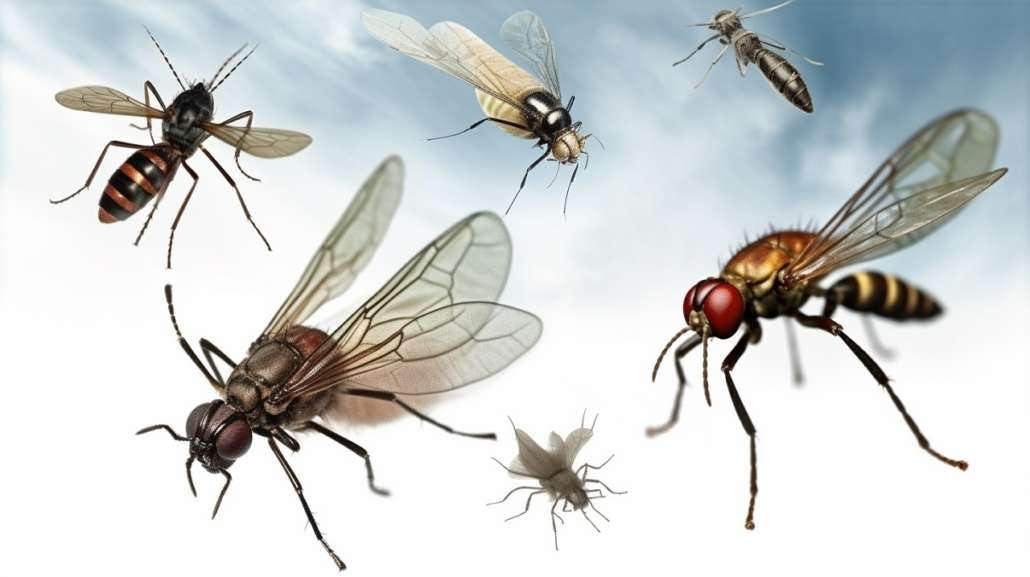SCORES & OUTDOORS: Where have all the insects gone?

 by Roland D. Hallee
by Roland D. Hallee
While sitting around a campfire a couple of evenings ago, someone asked the question: Where have all the bugs gone?
We began to discuss how few black flies, mosquitoes, June bugs, etc., we have seen so far this spring and summer.
Bugs are an interesting subject.
If a dollar value was put on the services insects provide, this would equal roughly $70 billion in the U.S. alone.
With an estimated 5.5 million species, insects are the most diverse group of animals on the planet. More than one million have been named by scientists — and many more have yet to be discovered. In fact, insects account for 80 percent of animal life on Earth.
But, both the number and diversity of insects are declining around the globe due to habitat loss, pollution and climate change. Without widespread action, many of these important creatures face extinction within the next few decades.
For instance, worldwide declines in insect populations have sparked considerable concern. To date, however, significant research gaps exist, and many insect threats remain under-investigated and poorly understood. Example, despite their charismatic bioluminescent displays and cultural and economic importance, the 2,000-plus species of firefly beetles have yet to be the subject of a comprehensive threat analysis.
Writing in BioScience, Sara M. Lewis, of Tufts University, and her colleagues aim to fill the gap with a broad overview of the threats facing these diverse and charismatic species – as well as potential solutions that may lead to their preservation into the future. Lewis and colleagues catalog numerous threats, foremost among them habitat loss, followed closely by artificial light and pesticide use. The future is not bleak, however, and the authors describe considerable opportunities to improve the prospects of bioluminescent insects, including through the preservation of habitat, reduction of light pollution, lowered insecticide use, and more-sustainable tourism.
By making a few small changes in your life, you can help curb this worldwide problem. Insects are crucial to life on Earth and what you can do to help save these amazing creatures.
The question that is always raised is why should I protect insects?
While many insects can seem like pests, they provide a wide range of services to other plants and animals in our environment. In fact, a diverse range of insect species is critical to the survival of most life on Earth, including bats, birds, freshwater fishes and even humans! Along with plants, insects are at the foundation of the food web, and most of the plants and animals we eat rely on insects for pollination or food. For example, 96 percent of songbirds feed insects to their young.
According to the U.S. Natural Resources Conservation Service, roughly 35 percent of the world’s food crops depend on pollinators to reproduce. That means you can thank a pollinator for about one of every three bites of food you eat. According to the U.S. Fish and Wildlife Service, more than 100,000 different animal species play roles in pollinating the 250,000 kinds of flowering plants on Earth, with insects like bees, wasps, moths, butterflies, flies and beetles being the most common. Additionally, some insects are natural predators to pests that may harm food crops.
Some insects are known as decomposers, meaning they break down dead materials like fallen leaves and animal carcasses and turn them into simpler materials, making nutrients available to primary producers like plants and algae. In other words, decomposers are nature’s own recycling system.
Only a very small fraction of insects in the world are considered by humans to be pests, meaning they cause harm to people, plants, animals and buildings. While insect pest control costs the U.S. economy billions of dollars annually, this number would be much higher if it weren’t for the countless beneficial insects that serve as natural predators to pest species, like fire ants and mosquitoes. Additionally, some parasitic insects like small wasps lay their eggs inside pest species, driving their population down. To adequately control pests, we need beneficial insects.
Insects are the primary menu item for many reptiles, birds and amphibians. If insect populations continue to decline, some food webs might collapse entirely.
We also depend on insects for silk, dyes, honey and medical and genetic research. But, aside from the services insects provide, they are simply fascinating animals that spark curiosity in humans, especially children. These incredible creatures exhibit many extraordinary behaviors that are unthinkable in other forms of life and have inspired technology that we use today, like drones! Take some time to really observe the insects in your backyard, what behaviors do you see that captivate you?
Since many insects have yet to even be discovered, there may be benefits we don’t even know about yet!
So, the next time you think about swatting, spraying or crushing, maybe, just maybe, that creature can serve more benefits to you alive than dead.
Roland’s trivia question of the week:
A large brown bear named Blades is the mascot of what Boston professional sports team?
Responsible journalism is hard work!
It is also expensive!
If you enjoy reading The Town Line and the good news we bring you each week, would you consider a donation to help us continue the work we’re doing?
The Town Line is a 501(c)(3) nonprofit private foundation, and all donations are tax deductible under the Internal Revenue Service code.
To help, please visit our online donation page or mail a check payable to The Town Line, PO Box 89, South China, ME 04358. Your contribution is appreciated!


Leave a Reply
Want to join the discussion?Feel free to contribute!